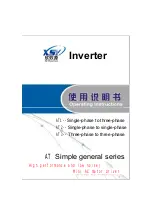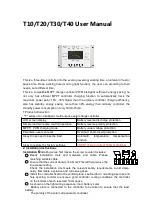
Xtium2-CLHS PX8 User's Manual
Xtium2-CLHS PX8 Reference
•
49
Note: For information on camera configuration files, see the Sapera Acquisition Parameters Reference
Manual (OC-SAPM-APR00).
Sapera Acquisition Methods
Sapera acquisition methods define the control and timing of the camera and frame grabber board.
Various methods are available, grouped as:
•
Camera Trigger Methods (method 3 supported)
•
Line Trigger Methods (method 2)
•
Line Integration Methods (methods 8, 9 and 10 supported)
•
Time Integration Methods (method 10, 11 and 12)
•
Strobe Methods (method 1, 3, 4 and 5 supported)
Refer to the Sapera LT Acquisition Parameters Reference manual (OC-SAPM-APR00) for detailed
information concerning camera and acquisition control methods.
Trigger to Image Reliability
Trigger-to-image reliability incorporates all stages of image acquisition inside an integrated
controller to increase reliability and simplify error recovery. The trigger-to-image reliability model
brings together all the requirements for image acquisition to a central management unit. These
include signals to control camera timing, on-board frame buffer memory to compensate for PCI bus
latency, and comprehensive error notification. If the Xtium2-CLHS PX8 detects a problem, the
application can take appropriate action to return to normal operation.
The Xtium2-CLHS PX8 is designed with a robust ACU (Acquisition and Control Unit). The ACU
monitors in real-time, the acquisition state of the input plus the DTE (Data Transfer Engine) which
transfers image data from on-board memory into PC memory. In general, these management
processes are transparent to end-user applications. With the Xtium2-CLHS PX8, applications ensure
trigger-to-image reliability by monitoring events and controlling transfer methods as described
below:
Supported Events and Transfer Methods
Listed below are the supported acquisition and transfer events. Event monitoring is a major
component to the Trigger-to-Image Reliability framework.
Acquisition Events
Acquisition events pertain to the acquisition module. They provide feedback on the image capture
phase.
•
External Trigger (Used/Ignored/End)
Generated when the external trigger pin is asserted, which indicates the start of the
acquisition process. There are three types of external trigger events: ‘Used’, ‘Ignored’ and
‘End’. Following an external trigger, if the event generates a captured image, an External
Trigger Used event will be generated (CORACQ_VAL_EVENT_TYPE_EXTERNAL_TRIGGER).
If there is no captured image, an External Trigger Ignored event will be generated
(CORACQ_VAL_EVENT_TYPE_EXTERNAL_TRIGGER_IGNORED). An external trigger event is
ignored if the event rate is higher than the possible frame rate of the camera. When using
an active high/low or double pulse rising/falling edge trigger detection, the 2
nd
pulse will
generate the External Trigger End event
(CORACQ_VAL_EVENT_TYPE_EXTERNAL_TRIGGER_END).
•
Start of Frame
Event generated during acquisition, with the detection of the start of a video frame by the
















































